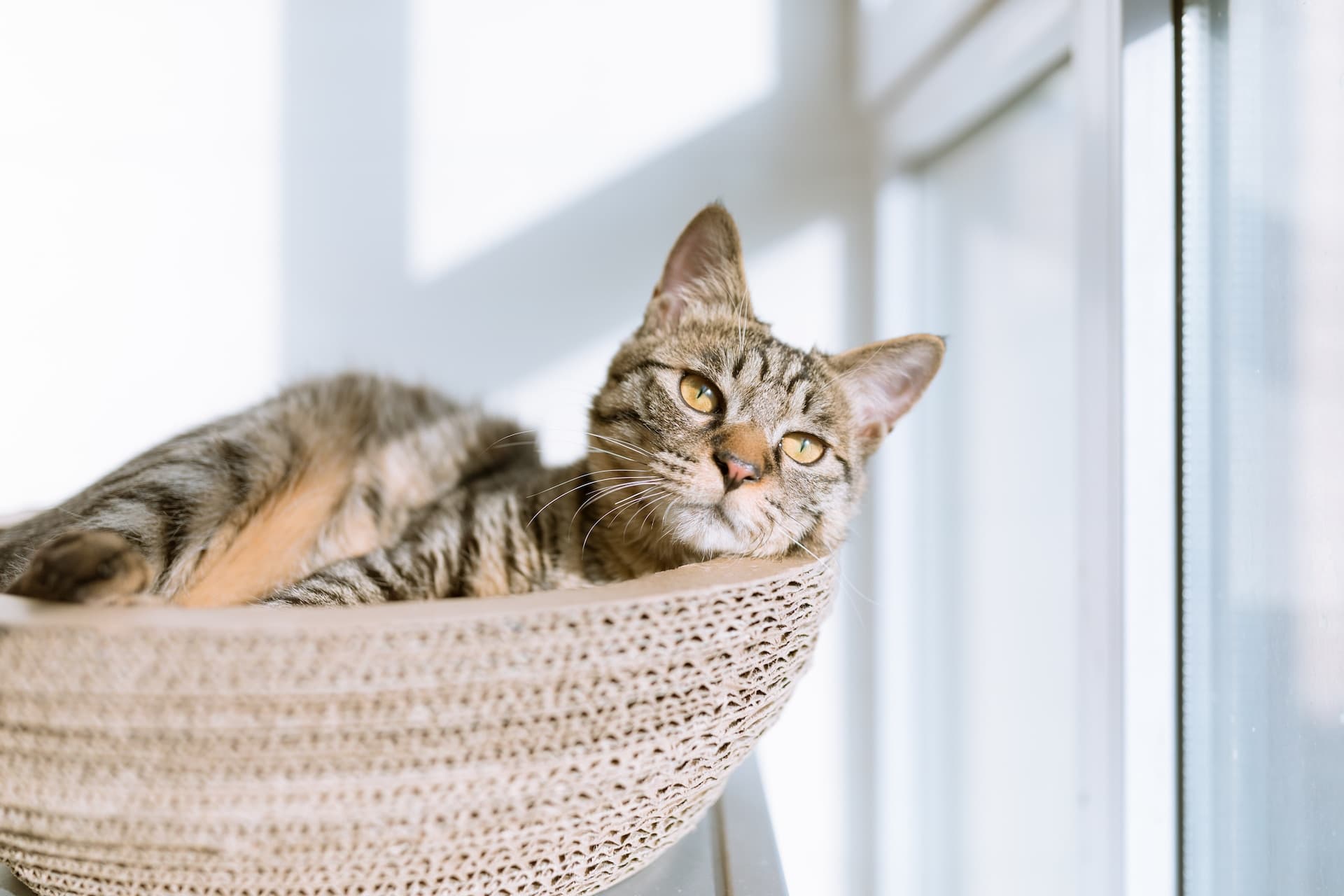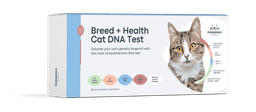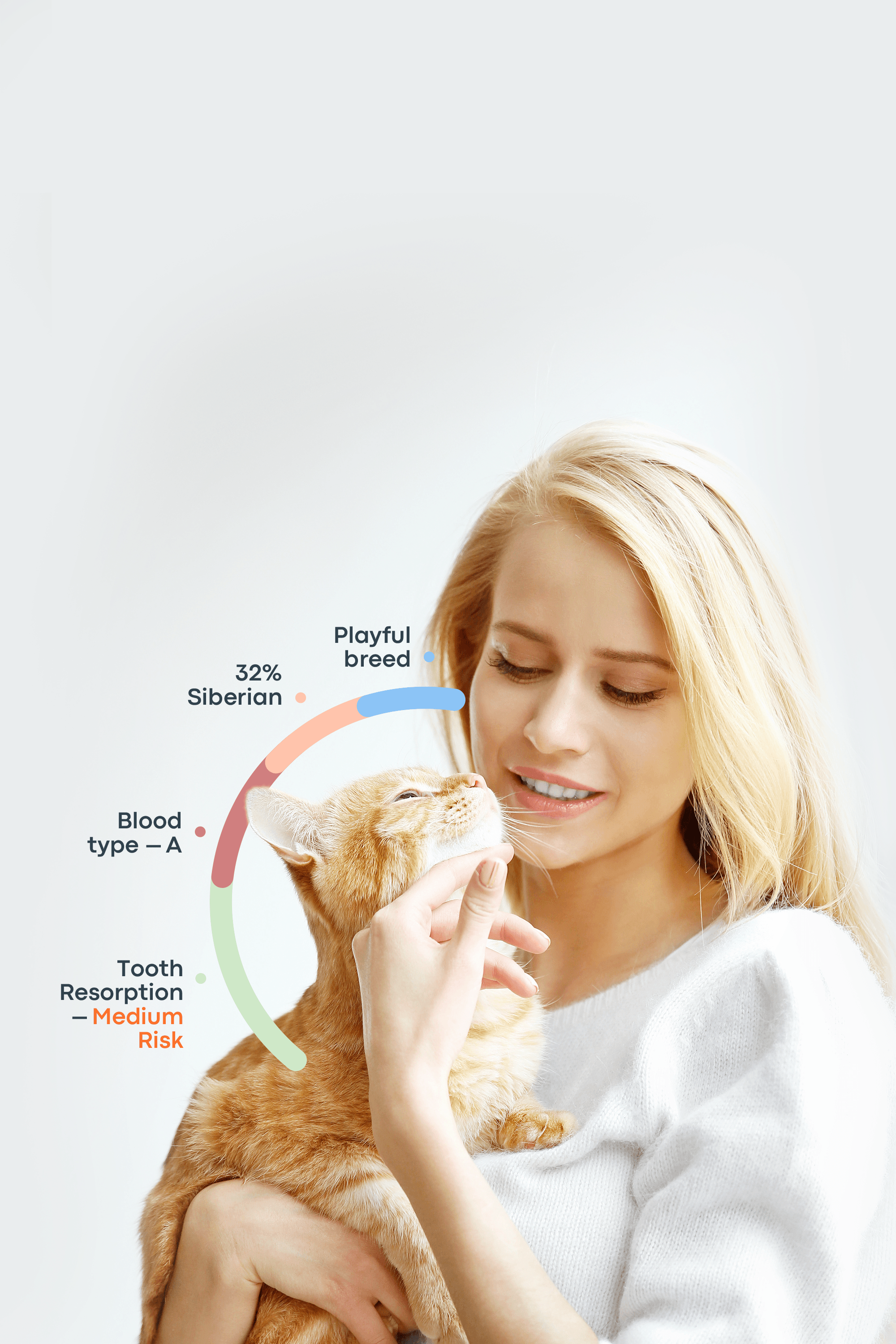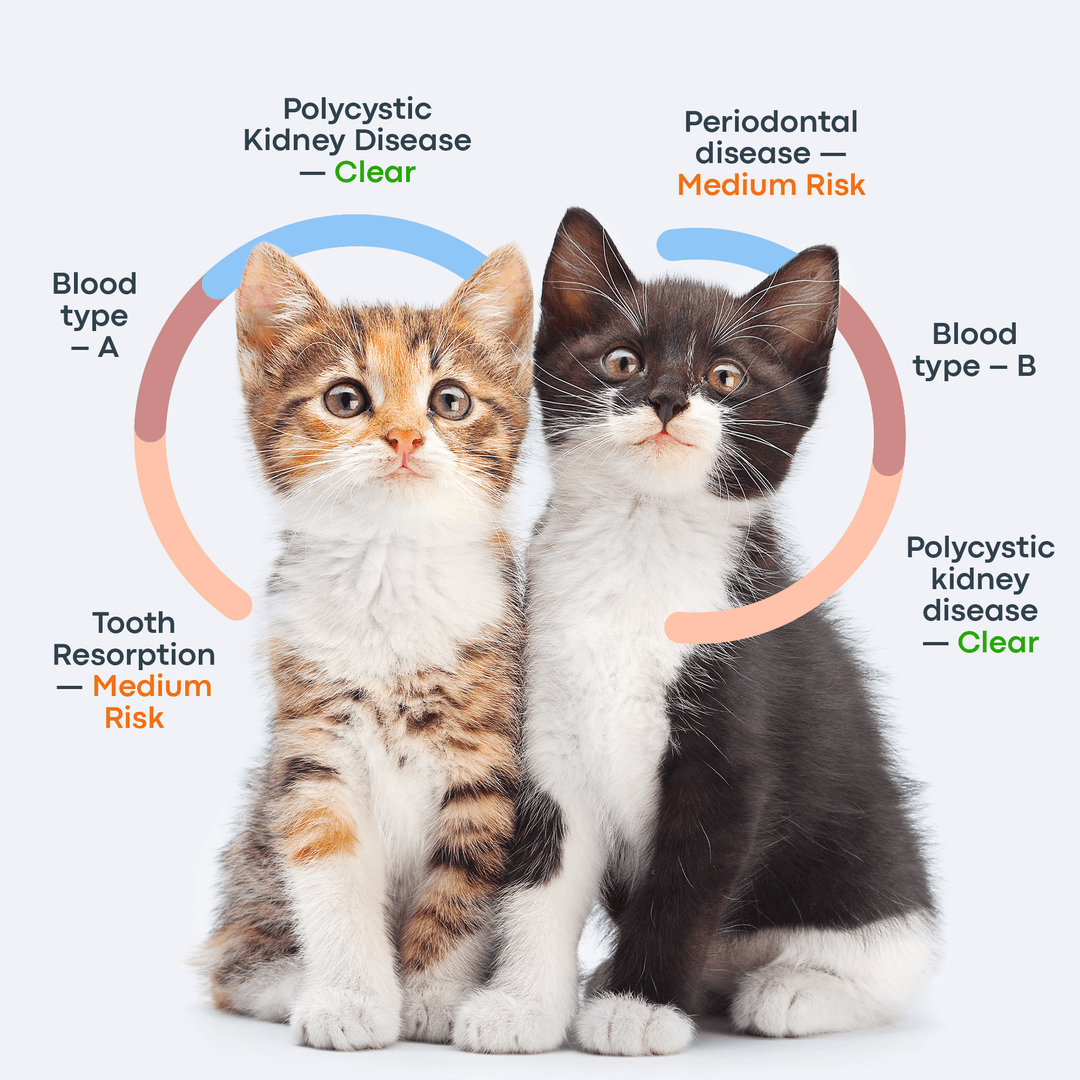There are an estimated 40 to 75 recognized cat breeds worldwide—though the exact number depends on which registry you check, as major organizations don’t always agree. What’s certain is that each breed has its own charm and unique traits. The Domestic Shorthair cat, however, is a little different. While often mistaken for a breed, this is an “umbrella” term that actually refers to a large group of mixed-breed cats with short coats. They are among the most common and beloved cats in households across the globe, cherished for their variety, adaptability, and easygoing nature. Today, we’ll explore everything that makes Domestic Shorthairs special.

Is the Domestic Shorthair Cat a Breed?
Although “Domestic Shorthair” often appears on lists of cat breeds, it isn’t technically a breed at all. Instead, it’s a broad term used to describe mixed-breed cats with short, sleek coats. Because of their varied ancestry, they don’t have a fixed breed standard and are not officially recognized by major organizations like the Cat Fanciers’ Association (CFA) or The International Cat Association (TICA).
That said, Domestic Shorthairs are still some of the most popular cats around the world. They come in nearly every color and pattern imaginable, and their personalities are just as diverse. While they can’t compete in pedigree categories at cat shows, they often shine in the “Household Pet” class, where judges focus on health, temperament, and grooming rather than lineage.
What Does DSH Mean for Cats?
The acronym DSH stands for Domestic Shorthair. It’s a term commonly used by veterinarians, animal shelters, and adoption centers to describe cats of mixed or unknown ancestry that have short coats. On official paperwork, “DSH” is a quick way to classify these cats when their exact breed can’t be identified.
A DSH can come in nearly any coat color or pattern—tabby, calico, tuxedo, solid, and more—making them one of the most visually diverse groups of cats. Unlike pedigree breeds, which have predictable looks and traits, Domestic Shorthairs vary widely in personality and appearance. This variety, along with their generally hardy health and easy-to-care-for coats, is part of what makes them so popular as family pets.
Domestic Shorthair Cat History
As mentioned earlier, Domestic Shorthair cats are not a single breed but rather a category for a wide variety of mixed-breed cats with short coats. Because of this, it’s nearly impossible to pinpoint one exact origin. However, their ancestry stretches back thousands of years, and their role alongside humans has been well documented.
Evidence suggests that cats resembling today’s Domestic Shorthairs lived in Egypt as far back as 2000 BC. They were highly valued for their hunting skills, especially for controlling rodents in grain stores and marketplaces. Over time, these cats became more than just working animals—they won the affection of humans and began living indoors as companions.
Centuries later, cats with similar traits traveled with explorers and traders. By the 1600s, seafaring cats served as vital crew members on ships headed to the New World, keeping food supplies safe from rats. Once in the Americas, settlers welcomed them into homes and farms, where they became both protectors of food stores and beloved pets.
It’s worth noting that not all historians agree on a single point of origin. While many believe their roots trace back to Ancient Egypt, others suggest Domestic Shorthairs developed across multiple regions, including Europe, Asia, and Africa. This wide genetic diversity is part of why today’s DSHs come in so many different colors, coat patterns, and personality types.
DSH Cat Temperament and Personality
The DSH cat breed is known for its remarkable variety in temperament. Because Domestic Shorthair cats are a mixed group rather than a defined breed, no two DSHs are exactly alike. That said, many share some common traits: they tend to be friendly, playful, affectionate, and adaptable. Some are bundles of energy who love interactive play, while others are more laid-back and perfectly content to spend the afternoon curled up on the couch.
Thanks to their easygoing nature, most Domestic Shorthairs get along well with children, other cats, and even dogs when properly introduced. Their playful streak often shines during games with toys or family members, but they’re just as happy enjoying quiet time in a calm household.
One of the biggest reasons they’re so popular is their versatility. Domestic Shorthairs adjust well to different living situations, from busy households full of activity to quiet apartments. Paired with their low-maintenance grooming needs and generally hardy health, it’s no surprise that they’ve become one of the most beloved feline companions worldwide.
How Big Do Domestic Shorthair Cats Get?
Domestic Shorthair cats are typically medium to large in build, with sturdy, well-proportioned bodies. On average, adult DSHs weigh between 8 and 15 pounds, though males are usually larger than females. Some particularly big-boned individuals can weigh even more, especially if they are overfed or not given enough exercise.
Because of their adaptable nature, many DSH cats are content with a relaxed, low-energy lifestyle. While this makes them easy to keep as indoor pets, it also means they can be prone to weight gain if their diet and activity levels aren’t monitored. Regular playtime, interactive toys, and portion-controlled feeding are important to keep them healthy and prevent obesity-related health issues.
Average Domestic Shorthair Growth Chart
Age | Weight Range | Developmental Stage |
Newborn | 3–5 oz (85–140 g) | Neonatal |
2 weeks | 7–10 oz (200–280 g) | Early kittenhood |
4 weeks | 12–16 oz (340–450 g) | Beginning weaning |
8 weeks | 1.5–2 lbs (0.7–0.9 kg) | Ready for adoption |
3 months | 3–4 lbs (1.4–1.8 kg) | Junior kitten |
6 months | 5–8 lbs (2.3–3.6 kg) | Adolescent |
9 months | 6–10 lbs (2.7–4.5 kg) | Late adolescent |
12 months | 7–12 lbs (3.2–5.4 kg) | Young adult |
18–24 mo. | 8–15 lbs (3.6–6.8 kg) | Fully mature |
Domestic Shorthair Coat Colors and Patterns

One of the most striking features of Domestic Shorthair cats is their incredible variety of coat colors and patterns. Because they aren’t a defined breed, their appearance is shaped by a wide and diverse gene pool—meaning no two cats are ever quite the same.
Domestic shorthair kitten coats can be found in almost every color imaginable, including shades of black, white, gray, brown, orange, and cream. Their patterns are just as diverse, ranging from:
Tabby (striped, spotted, swirled, or mackerel patterns, usually in brown, gray, or orange)
Bicolor (two colors, often black-and-white or gray-and-white)
Tricolor (three-color mixes, usually tortoiseshell or calico)
Tortoiseshell (a mottled blend of black, orange, and sometimes cream)
Calico (distinct patches of white, black, and orange)
Tuxedo (black cats with white “formalwear” markings on the chest and paws)
Pointed (darker coloration on the ears, face, paws, and tail, similar to Siamese cats)
Among these, tabby patterns are the most common, recognizable by their classic stripes, swirls, or spots and often featuring the distinctive “M” marking on the forehead. Grey and white Domestic Shorthair cats are also frequently seen and are especially popular as pets.
Fun fact: Because Domestic Shorthairs aren’t restricted by breed standards, they have one of the widest ranges of coat colors and patterns in the cat world—making them truly unique companions.
Health Issues in Domestic Shorthair Cats
Thanks to their diverse genetic backgrounds, the Domestic Shorthair mix is generally a hardy and healthy group. When properly cared for, they often live 12 to 15 years, making them long-term companions for their families.
That said, like all cats, DSHs are susceptible to some common health issues. According to veterinarians such as Dr. Jack Ayerbe, these can include:
Dental disease – Plaque buildup can lead to gingivitis, tooth decay, and bad breath. Regular dental care, including brushing and professional cleanings, helps prevent problems.
Obesity – DSHs love to eat, and their adaptable nature can make them prone to weight gain if exercise and diet aren’t monitored. Maintaining a healthy weight reduces the risk of diabetes, arthritis, and other complications.
Urinary tract infections (UTIs) – These can be common in both male and female cats. Adequate hydration, a balanced diet, and routine vet checkups help prevent UTIs.
Regular veterinary visits are essential to catch health issues early and keep your cat thriving. Even if your cat dislikes the carrier or vet trips, prioritizing checkups is key to ensuring a long, happy, and healthy life.
Tip: A healthy lifestyle for your DSH includes a balanced diet, interactive play for exercise, mental stimulation, and preventive veterinary care.
Grooming and General Care
Domestic Shorthair cats have short, smooth coats that are relatively low-maintenance compared to long-haired breeds. A weekly brushing is usually sufficient to reduce shedding, prevent hairballs, and keep their coat looking healthy and shiny.
Other basic care tasks include:
Nail trims – Regular trimming prevents overgrowth and reduces the risk of scratching injuries.
Ear cleaning – Check ears periodically for wax buildup or signs of infection.
Litter box maintenance – Daily scooping is essential. Cats are particular about cleanliness, and a dirty litter box can lead them to seek alternative, less desirable bathroom spots, like sinks or plants.
In addition to these at-home care routines, regular veterinary visits are crucial for overall health. Your DSH should also have semi-regular dental checkups to prevent periodontal disease and other oral health issues. Work with your veterinarian to create a schedule that keeps your cat healthy and comfortable.
Tip: Incorporating grooming and care tasks into daily or weekly routines can also strengthen your bond with your cat, making these activities enjoyable for both of you.
Domestic Shorthair Kitten Care
Domestic Shorthair kittens reach full maturity around 12 months of age, but their early months require special care to ensure healthy growth and development. Kittens should be fed multiple small meals per day using kitten-specific food, which is higher in protein, DHA, and calcium compared to adult cat food. These nutrients support strong bones, brain development, and overall growth during this critical stage.
Regular veterinary care is also essential. Kittens should receive vaccinations, deworming treatments, and routine health checks to prevent illness and ensure they are developing properly.
Spaying or neutering your kitten is strongly recommended. Ideally, your veterinarian will perform this procedure before six months of age. Early spaying or neutering not only prevents unwanted litters but also reduces the risk of certain cancers. According to PetMD, having a female cat spayed before six months can reduce the risk of uterine and ovarian cancers by up to 91%.
Tip: Alongside proper nutrition and medical care, early socialization and gentle handling are important for Domestic Shorthair kittens, helping them grow into well-adjusted, confident adult cats.
Interesting Facts About Domestic Shorthair Cats
Also called “moggies” – In the United Kingdom, DSH cat breed is often affectionately referred to as “moggies,” a term used for cats of mixed or unknown ancestry.
Highly intelligent – DSHs are quick learners and can respond to commands such as “stay,” “come here,” or even perform tricks with proper training and positive reinforcement.
Coat color changes – Their fur can change over time due to factors like age, temperature, and sun exposure. For example, some kittens may lighten or darken as they grow, and sunny spots can subtly alter coat shades.
Hybrid vigor – Thanks to their mixed ancestry, Domestic Shorthairs often benefit from “hybrid vigor,” meaning they are generally healthier and less prone to genetic disorders than many purebred cats.
Fun fact: Their diverse genetics not only contribute to better health but also result in a wide variety of personalities and appearances, making each DSH uniquely charming.
Why Adopt a Domestic Shorthair Cat
Domestic Shorthair cats are endlessly entertaining and affectionate. Whether they’re chasing the family dog around the house or curling up next to you when you’re feeling under the weather, DSHs are full of surprises and personality. Their adaptable nature allows them to thrive in almost any household, making them ideal companions for a wide variety of lifestyles—whether you’re active, busy, or enjoy a quieter home. On top of that, they are both adorable and hardy, requiring relatively low-maintenance care compared to many purebred cats.
DSHs are also the most common type of cat found in animal shelters or living as strays, which makes them a particularly rewarding choice for adoption. By adopting a Domestic Shorthair, you’re giving a loving, intelligent, and versatile cat a permanent home—and gaining a loyal and playful companion in return.
Because of their varied personalities, spending time with a shelter DSH before adoption can help you find one whose energy level and temperament match your household.
Frequently Asked Questions
Can a short hair domestic cat breed be affectionate?
Absolutely! Domestic Shorthairs are known for their friendly, loving, and playful personalities. While each cat is unique due to their mixed ancestry, many DSHs enjoy cuddling, interactive play, and forming strong bonds with their human family members.
How big do domestic shorthair cats get?
Adult DSHs typically weigh 8–15 pounds, with males usually larger than females. Their size can vary based on genetics, diet, and activity level, but most fall within this medium-to-large range.



